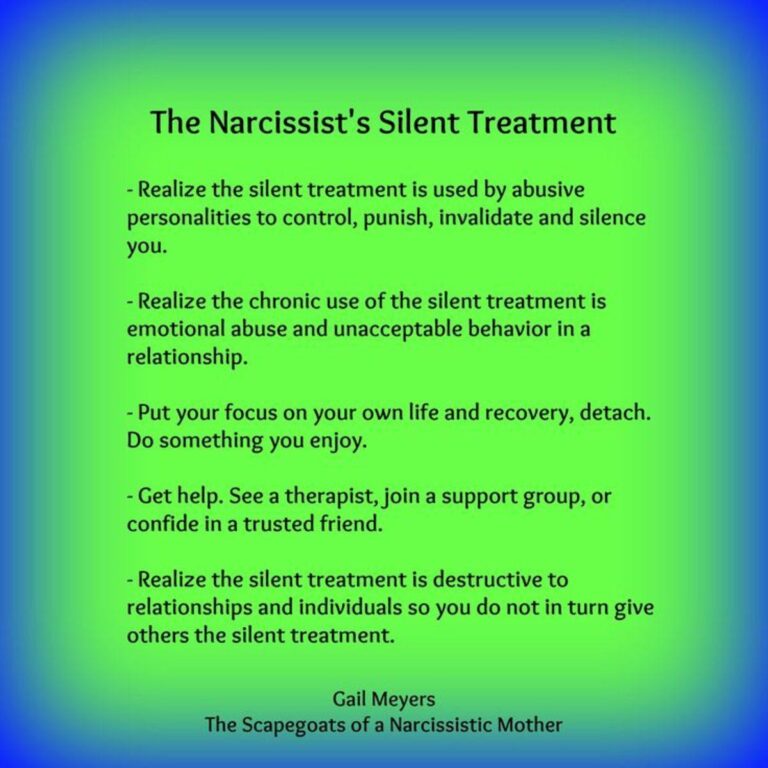Ever been in a conversation where suddenly, the other person just… goes silent? That’s the classic “silent treatment” in action. At first glance, it might seem like a harmless cooling-off period, but beneath the surface, this quiet tactic holds a surprising power. It’s a subtle way to control emotions, influence decisions, and even steer thoughts — all without saying a single word. In this post, we’re diving into the world of the silent treatment to uncover how it quietly controls minds and why understanding it can help you take back your voice. Ready to break the silence? Let’s go!
Table of Contents
- Understanding the Psychological Impact of the Silent Treatment
- How the Silent Treatment Manipulates Emotions and Behavior
- Recognizing the Signs Before It Takes Control
- Effective Ways to Communicate and Break the Silence Cycle
- Final Thoughts
Understanding the Psychological Impact of the Silent Treatment
When someone uses the silent treatment, it’s not just about choosing not to speak — it’s a subtle form of psychological manipulation. This withdrawal of communication can create an emotional vacuum, leaving the recipient struggling to interpret the silence. Without answers or feedback, their mind often spirals into self-doubt, anxiety, and confusion. The brain craves connection, and withholding it triggers feelings of rejection that are almost hardwired to hurt. Over time, this covert tactic chips away at confidence and self-esteem, making people more vulnerable and easier to influence.
The power behind this quiet control lies in its unpredictability and the inherent human need for closure. Those subjected to the silent treatment may experience symptoms like:
- Heightened stress levels—the brain remains on alert, searching for signs of reconciliation.
- Overanalyzing past interactions, trying to pinpoint what went wrong.
- Emotional withdrawal as a defense mechanism to avoid deeper pain.
Recognizing these impacts helps empower individuals to regain control, set boundaries, and refuse to be cornered by silence.
How the Silent Treatment Manipulates Emotions and Behavior
The silent treatment operates as a subtle yet potent form of emotional manipulation, effectively steering thoughts and feelings without uttering a single word. When someone withdraws communication, it creates a psychological void that often triggers anxiety, self-doubt, and confusion in the recipient. This absence of response is not just a passive act; it’s a deliberate signal used to exert control, making the other person feel unseen, unimportant, or even guilty. Over time, this silence can chip away at one’s confidence, encouraging compliance and submission to the manipulator’s unspoken demands.
Understanding the mechanisms behind this tactic is key to protecting yourself from its impact. Those who wield the silent treatment skillfully exploit basic human needs for connection and affirmation by:
- Creating uncertainty: The lack of communication makes the recipient constantly question what they did wrong.
- Enforcing power: Silence becomes a weapon to dominate and control the pace of conflict resolution.
- Inducing emotional withdrawal: It discourages open dialogue, leaving the other party isolated and eager to mend fences on the manipulator’s terms.
Recognizing these tactics can empower you to break free from this emotionally controlling cycle and reclaim your voice in any relationship.
Recognizing the Signs Before It Takes Control
Sometimes, the subtle shifts in communication can signal the beginning of a controlling dynamic without us even realizing it. It’s often less about dramatic confrontations and more about those quiet moments when someone begins to withdraw, avoid eye contact, or respond with cold silence. These signs might appear harmless at first, but they slowly erode trust and create confusion, leading you to question your own feelings and reactions. Recognizing these early indicators can empower you to set boundaries before the silent treatment takes a stronghold on your emotional well-being.
Look out for changes like:
- Sudden emotional distance that isn’t explained.
- Unresponsive behavior during important conversations.
- Using silence as punishment instead of discussing issues openly.
By trusting your instincts and paying attention to these quiet signals, you gain the ability to address the situation calmly and regain control of your own peace of mind.
Effective Ways to Communicate and Break the Silence Cycle
Breaking free from the grip of silent treatment starts with creating a safe space where open expression is encouraged. Begin by acknowledging your feelings without judgment, whether you’re the one withholding words or receiving the silence. It’s vital to replace silence with gentle invitations to talk, like asking open-ended questions or sharing small truths about your own experiences. When communication becomes a two-way street of trust and respect, the power of silence diminishes significantly.
Another key step is to develop practical tools for dialogue that foster connection rather than conflict. Consider these strategies to spark meaningful conversations:
- Use “I” statements to express feelings without blame, e.g., “I feel hurt when…”
- Set aside dedicated time to talk without distractions or rush
- Practice active listening—really hear what the other person is saying before responding
- Agree on signals for when someone needs space but also when they’re ready to reconnect
By consistently using these techniques, you can turn silence from a weapon into a signal for pause and reflection, ultimately strengthening your bonds and preventing misunderstandings from spiraling into long-lasting emotional distance.
Final Thoughts
And there you have it—a closer look at how the silent treatment works its quiet magic when it comes to controlling minds. It’s fascinating, isn’t it? This seemingly simple act can pack a powerful emotional punch, often without anyone even realizing it. Understanding the silent treatment is the first step toward breaking free from its grip, whether you’re on the receiving end or just want to navigate relationships with a bit more insight. So next time silence falls, maybe you’ll see it for what it really is—and choose how to respond, rather than being caught off guard. Stay curious, stay kind, and keep those conversations flowing!

